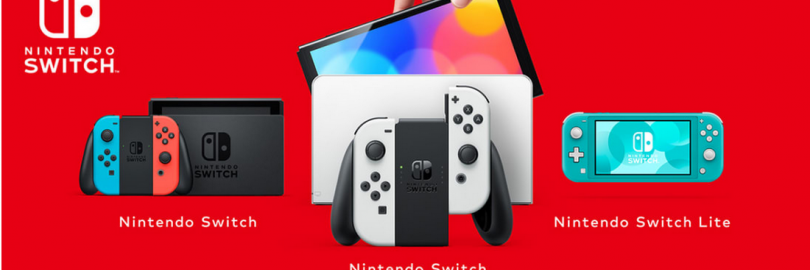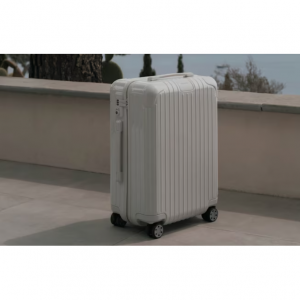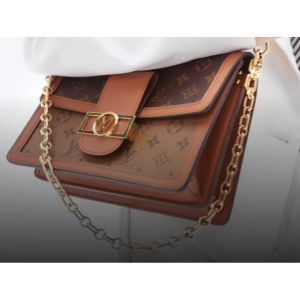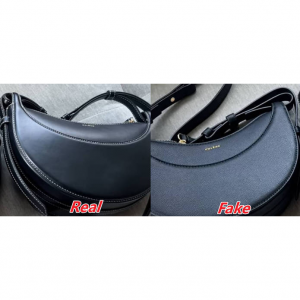
Nintendo Switch vs. Lite vs. OLED: Full Comparison & Verdict 2025
If you’re looking for a game system with a big library of party games, indie titles, and outstanding exclusives that is also portable, you can’t beat the Nintendo Switch. Since its release in 2017, the Nintendo Switch has transformed home and handheld console gaming. There are three Switch variations from which to choose — the premium Switch OLED, the inexpensive Switch Lite and the middle-of-the-road base Switch. Each makes a niche for itself; each shines in a specific area. So which is best for you? Here, I will break down the difference between the Nintendo Switch, the Switch Lite, and the Switch OLED to help you make an informed purchase.
Overview of Nintendo Switch, Switch Lite and Switch OLED
| #1 Nintendo Switch Consoles
Google Users Rating: 4.7/5
Gamestop: $299.99 (up to 5% cashback)
Bestbuy: $299.99 (up to 0.5% cashback)
If you want to buy Nintendo Switch consoles, don't forget to sign up at Extrabux!(What is Extrabux), then you can enjoy up to 5% cashback on your purchase from Extrabux! Sign-Up Bonus: Free to join it & get a $20 welcome bonus!
Nintendo Switch was released on March 3, 2017. It is the ultimate culmination of everything Nintendo has learned since entering the industry with its humble yet bold Nintendo Entertainment System (NES). It borrows its controller layout from the Super Nintendo, motion controls from the Wii, and touch screen interfaces from the Nintendo DS and Wii U.As a hybrid gaming console, you can hold it in your hands or hook it up to a TV/monitor and use it as a regular console. To be short, it can be used in handheld, tabletop, or TV mode.

| PROS | CONS |
| Bright, crisp, colorful screen | Joy-Cons charge only on console without accessory |
| Excellent variety of available games | Flimsy kickstand |
| Three play modes make it convenient to use wherever | |
| Smartly designed controls | |
| HD Rumble |
| #2 Nintendo Switch Lite
Google Users Rating: 4.7/5
Bestbuy: $199.99 (up to 0.5% cashback)
Introduced in 2019, the Switch Lite offers a smaller, lower-cost alternative to the Switch. The Lite has been built for handheld mode only, with no inbuilt Joy-Con controllers or TV connection compatibility. But it comes in a selection of vibrant colours including Blue, Yellow, Grey, Turquoise, and Coral.

| PROS | CONS |
| Lighter and smaller, more portable than standard Switch | No TV docking |
| Nice selection of colors | Controllers don't detach |
| Stellar game library | No rumble/vibration |
| D-pad helps with retro games | |
| Lower price |
| #3 Nintendo Switch OLED
Google Users Rating: 4.6/5
Gamestop: $349.99 (up to 5% cashback)
Walmart: $340.99 (up to 4% cashback)
Nintendo Switch OLED was released on October 8, 2021. It is a moderately upgraded version of the Switch, with the main difference being the screen. The Switch OLED boasts a 7-inch OLED screen capable of darker blacks and higher levels of contrast. It also has other new features like double the base storage (64GB) and a LAN connection on the TV dock.

| PROS | CONS |
| Bigger, brighter, and more colorful screen | Costs more than previous Switch |
| Vastly improved kickstand | Doesn't have many improvements over previous Switch consoles |
| Huge library of games | |
| 64GB of internal storage | |
| Enhanced speakers sound fantastic | |
| LAN port in dock |
Nintendo Switch vs. Lite vs. OLED: Full Comparison
Specifications
Here you can find the specifications of each Nintendo switch model . This is very useful to know in advance if they fulfill your aspirations. Don't worry if you don't understand any point, as I will cover them in more depth later.
| Nintendo Switch | Nintendo Switch Lite | Nintendo Switch OLED | |
| Size | Approximately 4 inches high, 9.4 inches long, and .55 inches deep (with Joy-Con attached) | Approximately 3.6 inches high, 8.2 inches long, and .55 inches deep | 4 inches high, 9.5 inches long, and .55 inches deep (with Joy-Con attached) |
| Weight | 0.66 pounds (.88 pounds with Joy-Con controllers attached) | Approximately .61 pounds | Approximately .71 pounds (.93 pounds with Joy-Con controllers attached) |
| Color Options | Gray / Red and Blue | Gray / Turquoise / Yellow/ Pink / Purple | Black and White / Red and Blue |
| Screen | capacitive touch screen / 6.2-inch LCD Screen / 1280 x 720 | Capacitive touch screen / 5.5-inch LCD / 1280×720 resolution | Multi-touch capacitive touch screen / 7.0-inch OLED screen / 1280×720 |
| Video output | Up to 1080p via HDMI in TV mode and up to 720p via built-in screen in tabletop mode and handheld mode | No TV output | Up to 1080p via HDMI in TV mode / Up to 720p via built-in screen in Tabletop mode and Handheld modes |
| Speakers | Front-facing stereo | Bottom-facing stereo | Front-facing stereo |
| CPU/GPU | NVIDIA Custom Tegra processor | NVIDIA Custom Tegra processor | NVIDIA Custom Tegra processor |
| RAM | 4GB | 4GB | 4GB |
| Storage | 32GB, expandable up to 2TB with microSDHC or microSDXC cards | 32GB, expandable up to 2TB with microSDHC or microSDXC cards | 64GB, expandable up to 2TB with microSDHC or microSDXC cards |
| Sensor | Accelerometer, gyroscope, and brightness sensor | Accelerometer / gyroscope | Accelerometer, gyroscope, and brightness sensor |
| Connectivity | W-Fi AC, Bluetooth 4.1 for controllers | W-Fi AC, Bluetooth 4.1 for controllers | Wi-Fi AC, Bluetooth 4.1 for controllers |
| Internal battery | Lithium-ion battery/4310mAh | Lithium-ion battery / battery capacity 3570mAh | Lithium-ion battery / 4310mAh |
| Battery life | Approximately 4.5 to 9 hours | Approximately 3 to 7 hours | Approximately 4.5 to 9 hours |
| Charging time | Approximately 3 hours | Approximately 3 hours | Approximately 3 hours |
| Ports on Console | USB-C, 3.5mm headphone jack | USB-C, 3.5mm headphone jack | USB-C, 3.5mm headphone jack |
| Ports on Dock | 2X USB 2.0, HDMI, AC power port | Not compatible with dock | 2X USB 2.0, HDMI, Ethernet, AC power port |
| Compatible Games | All | Limited, but almost all | All |
Design
Although the original Switch and OLED models are the same size, the designs differ slightly. The OLED switch is slightly heavier, has more powerful speakers and features a more powerful kickstand that extends almost the length of its body and can perform limbo, supporting the switch from any angle. The kickstand on the original Switch was a single card that appeared at one end of the device. The Switch Lite, on the other hand, is a different beast altogether. It’s a much smaller console (eight inches across instead of nine-and-a-half), and doesn’t have any options to dock it with a TV. As such, you can play it only in handheld mode. The controls are also hardwired into the console, so there are no Joy-Cons to remove.
The traditional Switch model has a basically black body and only the Joy-Cons are colored. These can be blue, red, green, pink, brown, yellow and gray. This taking into account all editions, including the special ones. The Switch Lite is available in grey, yellow, turquoise, coral and blue. And in the case of the OLED model, they have the traditional colored version (with the blue and red controls and the black dock) and also a new white version.
Screen
The biggest differences between all three Switch models comes from the display. All three are different sizes, with the Switch OLED naturally having a different panel. The Switch Lite has the smallest display coming in at 5.5 inches. That's trumped by the standard Switch's display, which measures in at 6.2 inches. And at 7 inches, the Switch OLED is larger too.
Both the Switch and the Switch Lite features LCD screens, while the Switch OLED model has an OLED screen which offers more vivid colors with “deeper blacks” and higher contrast. However, all three screens use a 720p resolution and have a fairly standard 60Hz refresh rate.
Dock and TV compatibility
Switch Lite is a portable only console and cannot be docked. It is not compatible with the regular Switch TV dock and you cannot play it in home console mode.One of the most attractive features of the Nintendo Switch and Switch OLED is the ability to connect with a television and go from being a portable console to a more traditional one. Both of them come with a dock. The docks, however, are ever-so-slightly different. The standard Switch dock allows you to connect your console to your TV via HDMI and connect to the internet via Wi-Fi. The Switch OLED dock adds a LAN port, as well as a slight aesthetic redesign. In addition, on a Nintendo Switch or Switch OLED, you'll be able to enjoy it on a 1080p TV, while in handheld mode the quality is reduced to 720p.
Controllers
The Nintendo Switch OLED and base Switch have exactly the same controller options. By default, they come with two detachable Joy-Cons. The Joy-Cons are versatile controllers. You can combine both of them in a controller mount; you can play with one in each hand; you can even use each Joy-Con as a tiny standalone controller, in case you want to get a spontaneous multiplayer match going.
The Switch Lite, by contrast, doesn’t have detachable controllers. You swaped portability with permanently connected controllers. But this version adds a proper D-pad that many gamers prefer over the four separate D-pad buttons on the other two models. It is important to note that if you purchase the Nintendo Switch Lite, you can purchase the Joy-Cons separately. However, in this case you will need a device for charging the battery.
There's a lot more to look at beyond these points regarding controls. As the Lite version doesn't have two controls, the left side has a D-pad.This change was made in order to promote a better experience during games, bringing superior accuracy. But it must be said that the Nintendo Switch Lite lacks the HD Rumble technology of the Joy-Cons. This is an interesting feature which mixes elements of vibration motors with the infrared camera. It gives the user a more intense feeling.The shakes accompany the actions of the games, greatly improving the experience, especially in the most exciting games.
Storage
Regarding storage, you can see how the Switch OLED stands out with up to 64 GB of capacity, while the Switch and the Switch remain at 32 GB. However, don't worry if memory seems low, as you can expand it by up to 2TB with a memory card. (MicroSDHC or MicroSDXC).
Game Availability
The Switch and Switch OLED support handheld mode alongside a TV mode and a tabletop mode. All Nintendo Switch games will work well on both of them. Considering the console’s age, that’s a huge line-up of titles to choose from.
And while, technically, all Switch games will run on the Switch Lite too, there are some that are more suited to TV mode, while the Switch Lite with its fixed screen only supports Handheld Mode.So the Switch Lite actually prevents you from playing a small selection of games, you’ll want to be aware of them before making your purchase.
Connectivity
Coming to connectivity, all three consoles support Wi-Fi (IEEE 802.11 a/b/g/n/ac) and Bluetooth 4.1. The Nintendo Switch can also be connected via a wired LAN adapter when in TV Mode, while the Switch OLED features LAN connectivity via the new dock. The Switch Lite lacks LAN support and TV Mode, but it does come with NFC support.
Battery Life
Due to its smaller chassis, the Switch Lite also has a smaller battery. Its battery life is approximately 3 to 7 hours. It lasts for anywhere between 2.5 to 6.5 hours depending on the game you’re playing. The Switch OLED and base Switch theoretically have the same battery life: between 4.5 and 9 hours, according to Nintendo. But your exact playtime can change dramatically, depending on the game, the screen brightness, the volume and so forth. Full charge time is similar across all three consoles, around 3 hours
Verdict
Nintendo Switch vs. Lite vs. OLED: Which One is Best for You?
You have learned the features and differences of three Nintendo consoles from the above content. It is obvious that the Nintendo Switch OLED is the best overall option. You get an OLED screen with incredible colors, deeper contrasts and a better experience. The backrest allows you to adjust the angle in table mode, while the LAN port in the docking station ensures a more stable internet connection. The Switch (OLED Model) also has 64 GB of internal storage.However, the exact answer depends on your preference.
The Switch Lite is best for players looking for the least expensive option. At $100 less expensive than the standard model, this price difference is worth being aware of. In addition, this is also a great choice for people who want a handheld-only experience.
For those looking to play casually, both in handheld and on the TV, and can’t afford to spend too much, the standard Switch will be your best bet.
And finally, if you are on a bigger budget and want a bigger console with an OLED screen, the OLED model is the ideal choice.
If you already already Nintendo Switch and it's in good shape you probably don't need the upgrade to the Switch OLED. The new features are nice, but unless you’re specifically looking for a bigger, slightly better screen.

Extrabux is an international cashback shopping site, offering up to 30% cashback from 10,000+ Stores!
Microsoft, Dell, HP, Lenovo, Alienware, Acer, Asus, Samsung, BestBuy, Walmart, Staples, Overstock, QVC, New Egg, Office Depot, eBay, etc.
Join to get $20 welcome bonus now! (How does Welcome Bonus work?)
Recommendation
-

Is Turkish Airlines Good for International Flights?
-

10 Best & Stylish Winter Coats for Women on NET-A-PORTER in 2025
-

Top 12 Items That Are Always Cheaper at Sam's Club!
-

Top & Best 12 Sneaker Apps/Websites for Raffles, Releases & Restocks in 2025
-

7 Best Gift Card Exchange Sites - Buy, Sell and Trade Discount Gift Card Safely and Instanly!












